|
|
||
Asian Adventures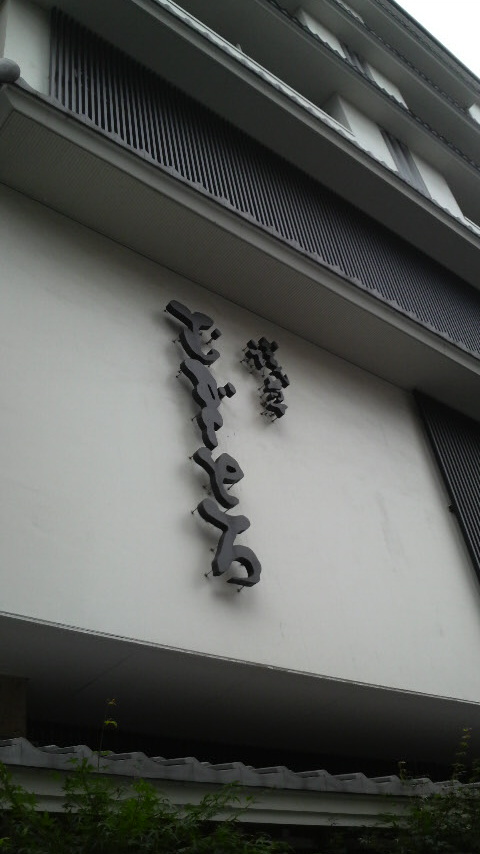 Grated Yams and Barley, Tokyo, Japan 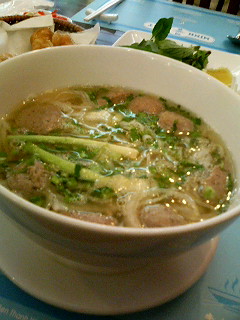 Ho Chi Minh City Restaurants 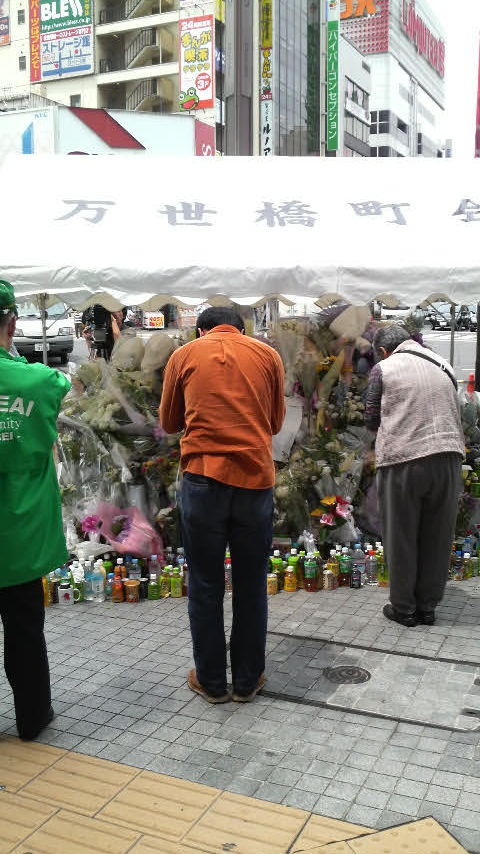 Pembantaian di Akihabara » Asian Tourism Growth Despite Global Economic Downturn: 2012 Report » Beijing Capital Airport » Budget Flights and No Frills Airliners in South East Asia » Getting a Massage in Singapore » In Transit in Singapore » Kuala Lumpur International Airport » Malaysia Massage and Spa Guide » Open Rice (Singapore) » Singapore ODP » Singapore's Changi Airport Guide » Shopping in Singapore: Best Denki » Study in Singapore » Suvarnabhumi Airport in Bangkok Thailand » Tripzilla
|
Singapore Airport Hub // Lost in Transit // Star Alliance, & Playing the Points Game 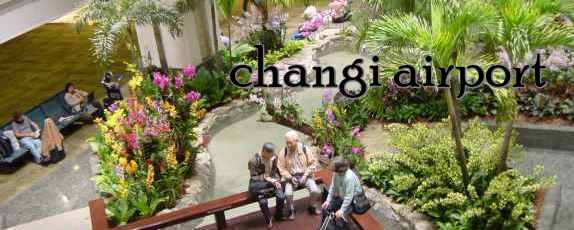 FOR A WHILE PEOPLE HAVE BEEN DEBATING WHICH AIRPORT DESERVES TO CALL ITSELF THE TRUE HUB OF SOUTH-EAST ASIA. Now, Kuala Lumpur Airport has a cool location in the middle of the jungle, but I wouldn't go out of my way to visit there. And while I have to confess that Bangkok's new Suvarnabhumi Airport is a grand and modern structure, it doesn't really compete with the old school style and opulence of Changi. What do I mean by opulence? -- I am talking about orchid gardens and swanky armchairs, free cinemas and rooftop bars. Miles and miles of corridors padded with soft carpets, leading to mysterious realms. These are the things which make Changi Airport an attraction in its own right, and a worthy place to hang out. Suvarnabhumi doesn't seem to have quite the same vibe. If I was strapped for cash and I had to crash for the night in the terminal to save money on accommodation, I would prefer to sleep at Changi. Oh, there are miles and miles of shops in Bangkok's new airport, and a spa and a bowling alley, but the atmosphere is stark rather than swank. Singapore is a no-brainer choice. If you have at least four hours to spare in transit, book a free two-hour city tour that takes in many of the delights of the republic (Raffles, Mustafa Centre, Suntec City, Little India, Kampong Glam, etc). Simply approach the Singapore Visitors Centres for more information, or phone 6472 7351. These tours are run daily at regular timings, and pre-registration is required. If you would rather do your own exploring, a seamless transportation network and efficient immigration clearance will put you in the middle of the action within minutes! That said, you don't need to leave the airport to have a great experience in Singapore. If you had six hours to spend in transit, you could start by doing some peoplewatching. Truly, what a kaleidoscope: shabbily dressed Australians with friendly faces, sunburnt French tourists wearing conical hats they picked up in Vietnam, doing the Mekong Delta. Blonde Scandinavian kids, Japanese businessmen sharp as knives. Whole posses of Indians in saris, Buddhist monks in flowing gold robes, from Myanmar and the Thai Kingdom. The last time I was in transit in Singapore, I saw a huge troupe of haredi Jews, dressed as sharp and black as the Japanese businessmen. If seeing the whole world in a microcosm is your thing, then you better think about stopping in Singapore, king of the trade routes. Being in transit should ideally be all about recharging (your body) and reconnecting (with the world) after all that time spent in the air. Sadly, transiting is hardly a relaxing experience in most airports around the world. Standing in lines and getting herded around by officers and officials barking irrational orders seems to be a common complaint, particularly in China. At Changi International Airport, on the other hand, you can take a dip in the pool, meditate in orchid gardens, or even get a pedicure. As the Changi Class magazine writes: "Shake off the jetlag from a long-haul flight with a dip in the Balinese-themed swimming pool at Terminal 1. Passengers staying at the Transit Hotel here can use the pool facilities for free. If you are not a guest, you can still do your laps for a small fee of S$13.90, which includes complimentary use of shower facilities, a towel and a non-alcoholic drink." For something a little harder, here are some of the treatments available in transit at Singapore Airport: Cozy Slumberettes: Rainforest Lounge, Terminal 1. Scrub and Glow: Body Contours Nail and Spa, Basement 2, Public Area, Terminal 3. Tropical Comforts: The Ultimate Spa, Terminal 2. 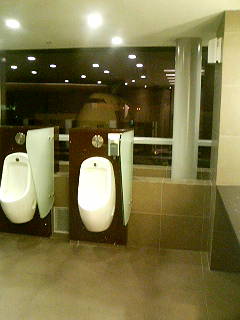 YOU JUST HAVE TO LOOK AT THE FOOD SELECTION HERE AT CHANGI, TO SEE HOW COSMOPOLITAN THIS PLACE IS. The airport's inhouse Changi Class magazine wrote in its April 2008 edition: "Chilli crab, laksa and satay are some of the best loved dishes in tropical Singapore. Feast on these and other uniquely Singaporean delights right here at changi Airport." Chilli Crab: Chen Fu Ji Noodle House, Terminal 2. Chilli Crab Dip and Chinese Buns: Hardrock Cafe, Terminal 3. Kaya Toast: Ya Kun Kaya Toast, Arrival Hall, public area Terminal 3 and Basement 2, public area Terminal 3; Wang Cafe, Terminal 2 and Level 2; Toast Box, Terminals 1 and 3. Laksa: Prima Taste, Terminal 3. It has been suggested (at least by one Thai visitor) that Terminal 2 has the more authentic (read: hawker Singaporean food), because it caters for Asian travellers. Wrote the aforementioned Thai TravBuddy: "Changi Airport is efficient, nice environmentally correct airport as always. However, since the basic short and long flight difference between the terminals, the local Singaporean has two different names for the terminals. The Terminal 2 for short flight (not so expensive flight) is "Hawker Terminal" whereas the Terminal 3 long flight (much more expensive) is "Rich people Terminal"... 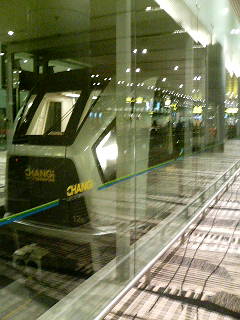 "THE AMBASSADOR TRANSIT HOTEL IS BARE BONES, BUT OFFERS MUCH BETTER SLEEPING CONDITIONS THAN ANY AIRPLANE BED, FLAT RECLINER OR NOT," wrote one Changi Airport enthusiast Ho John Lee a few years ago. Since that time, a lot of visitors to Changi International Airport have concurred. "At last," wrote Fodor's in one of their guides, "a lodging truly geared to bleary-eyed travelers en route to still another destination. This hotel is inside Changi Airport, on Level 3 of the departure lounge in both Terminals 1 and 2. (Note: if you stay here, you don't go through immigration control.) Rooms are clean, fresh, and basic. Rates are for six-hour periods and include use of the swimming pool, sauna, and fitness center. Nonguests may also use the pool (S$10), the sauna and showers (S$10), or just the shower (S$5). www.airport-hotel.com.sg. In-hotel: restaurant, bar, pool, gym, spa. AE, DC, MC, V." Unlike me, Ho John Lee has actually stayed in the transit airport (not my style -- I am more likely to be found sleeping outside on the concourse with plugs stuffed in my ears!) Ho John Lee says: "The Singapore airport has two transit hotels, a swimming pool, and two gyms on the terminal airside, meaning that you don't have to go through security. This is a bigger win these days than a few years ago. I've also gone into town to stay at a 'real' hotel, but while I'm on business travel I hardly do more than sleep, run, and wash at any hotel, and it hardly seems worth it. "The regular rooms have between 1 and 4 beds, a small desk, television, and bathroom. The economy rooms are smaller, some do not have a television, do not have a separate bathroom, but are adjacent to the gym, where there are a number of shower rooms. "Interestingly, the rooms have indicators pointing to Mecca, for the convenience of their Islamic clientele. There is also a small children's play area on the ground floor, but I've never seen any families at the transit hotel. It usually seems to be business travellers, and people are just trying to sleep. International flights are coming and going around the clock, so the hotel books blocks of six hours at a time, which can be extended by the hour. It's about US$35 for a room."Aerotel Transit Hotel, Terminal 1. Like One Mile at a Time, I often fly into strange cities not knowing exactly where I will be staying that night. I try to rely on the accommodation counter at the airport to find me somewhere good and, hopefully, cheap. Sometimes, as in the case of Mumbai, this leads to a lot of confusion and getting ripped off, rides through the unlit streets in dodgy cars, and sleeping in slums. Sometimes, in the case of Kuala Lumpur, it ends on a sweeter note. If you are flying into Singapore and you haven't arranged digs for the night, the SHA counters at the Singapore Changi Airport can help you with hotel bookings. Daily opening hours of SHA counters at Terminal 1:East Counter: 1000 hrs – 2330 hrs. West Counter: 24 hours. Daily opening hours of SHA counters at Terminal 2: North Counter: 0700 hrs – 2300 hrs. South Counter: 24 hours.
| |
|
| ||
